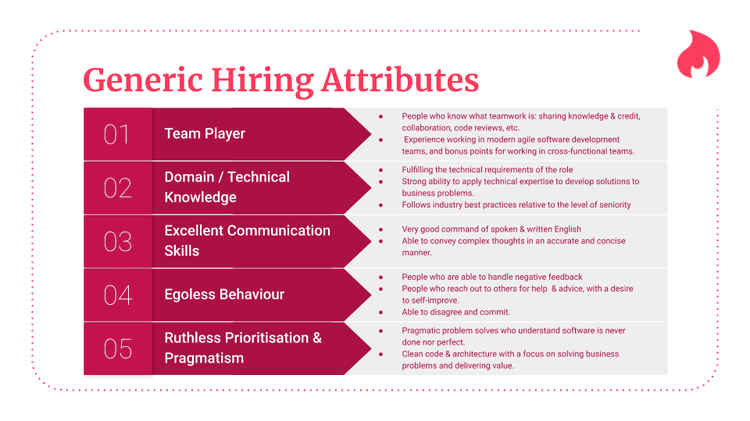In today’s economic landscape, the pressure to stay competitive has pushed engineering teams and individual engineering team members to evolve their complex workflows as well as grow and scale their staff. The EU mechanical engineering sector is expected to grow at an average annual rate of 3.8% over the coming 10 years, while the engineering services market on a global scale is expected to grow to $1.5 Bn through 2022.
Through cloud-based communication and collaboration tools, maintaining and hiring remote workers is easier than ever before. Yet, this comes with its own unique challenges for engineering teams. Technological advances have largely facilitated this growth, meaning that every engineering team from a large multinational organization to a small or mid-sized startup is able to hire the best candidates for the roles.

No longer can teams work in standard confines. They are expected to work beyond project silos, time zones, and physical location to meet strict deadlines. So how can your team meet these modern demands while also battling its way through competition? By growing and scaling as an engineering team. Although, this solution alone will not help teams stay competitive.
Even the best units need to find the right tools, workflows, and processes that keep feedback rounds and teamwork running for their specific needs. Once this is determined, engineering units have a better shot at warding off competition, winning, meeting deadlines, and ultimately being successful. Yet, one poignant question still remains; how can you achieve this while scaling and growing your team? In this article, we will provide 3 crucial considerations for managers or directors thinking about or currently in the process of scaling up their engineering teams.
This paper addresses the difference between on-premises software and SaaS
solutions for computer-aided engineering, explaining how SaaS came to be and its
key benefits.
First Consideration: Build Momentum
Momentum, put simply, is one way to quantify movement of some description. When momentum is first sparked, everything on your team’s to-do list starts to move toward completion, team and business goals are met, and customers, as well as employees alike, are happy and satisfied with the progress. When you find yourself in a burst of momentum, everything seems to go right, and teams feel excited about what else they can accomplish collaboratively. So how can you create this force of motion, and more importantly, keep it going?
Let’s start by looking at the key characteristics you can plainly see if a team is lacking momentum. This would include, but is not limited to, a lack of urgency, apathetic feelings, or a palpable lazy and even pessimistic attitude. How do you get your existing engineering team back on track from here? By winning.
A win, whether it be in business or sports, lights the match for motivation, which then ignites momentum. Let’s revisit some grade school physics, particularly Newton’s first law of motion, to guess what happens next. To paraphrase, something in motion will stay in motion until a force acts upon it. This is the same for winning, in that there is a snowball effect that occurs. Wins lead to team motivation and momentum, that in turn lead to more wins.

However, this ‘winning equals momentum attitude’ is only easy in practice if you’re team is relatively small and manageable, operating within the same office, and clear communication channels are in place. In 2020, we rarely find that this is the case. With more and more employees working remotely, technological advances, cloud-based infrastructures allowing teams to internationalize and have employees across the globe, and the rise of numerous integrated communication tools, it’s hard to manage the aforementioned variables. Therefore, engineering teams need to make sure they have a predefined method involving 1) how to share wins and 2) sustaining the visibility of wins. This has led to a rise in the need for collaboration tools and features, in addition to software and platforms already in use by companies. Yet, even with the right tools, the right people on your team make even more of a difference.
Second Consideration: Hire the Right People for Your Team
Building and maintaining momentum is only efficient if you have the right team responding to it. Despite being an innately difficult task, it becomes an even more complex challenge as you grow your engineering team. So what do we look for, at SimScale, when hiring engineers? Or any team for that matter? Let’s refer to our company values:

Hiring the right engineers for your company is a challenging task, however, you should make the qualities you’re looking for beyond the qualifications clear in your values or mission statement, as shown in the above picture. This way, you can make it explicitly clear what you are looking for, while implicitly asking for specific candidate attributes.
But, don’t just take our word for it, Let’s look at another company’s engineering hiring strategy. In this article written by Hotjar, they explain that when looking for engineers, the qualities they seek most are; Open-minded team players, skills that exceed their own, strong communication skills, someone with a low ego but high self-esteem, and ruthless prioritization and pragmatism. These traits are reflected in their ‘generic hiring attributes’ as well:

Any engineering team today must fulfill the following qualifications; the ability to adapt even in ambiguous situations, the ability to experiment, iterate, and innovate, and ultimately the ability to converge towards the same, and best, solution for the problem at hand. Individuals that make up this team must, in turn, be self-driven but able to work in a team, curious, and agile, in addition to their technical ability.
We are no longer living in the days where a degree in engineering is enough, the competitive landscape for this field is now saturated, and this is a key consideration for hiring as you grow your team. So the next question is, what do you do once you have sourced appropriate candidates to grow your team?
Third Consideration: Improve Execution Efficiency
If you can visualize these considerations as ingredients for a recipe, when added along with the first two ingredients, improving execution efficiency is the final ingredient that brings the whole mixture together. Once you’ve established momentum with new and existing team members, it’s time to rethink your execution process. Things have changed, there are more cooks in the kitchen (so to speak…) and old strategies and design processes must be optimized to improve your overall time to delivery.
Where do you start? Good question. Depending on your workflow, there are numerous places to look. Maybe look where it hurts, first? More generally, look to revamp your infrastructure, software, tools, etc., that together facilitate your team’s project execution from start to finish.
No longer can engineering teams be bound by project silos, time zones, or physical locations to meet demanding deadlines. So how can engineers use this to their advantage?
In this recent article about how to improve your design process, advice is given on how to tackle time management, how to test new technology options available to you, how to improve and remove parts of your current design process, how to improve your task management style, and finally how to take advantage of collaboration, and cloud-based collaboration tools, that are accessible to you.
Once you’ve started the improvement process, you’ll probably notice one area in particular that can always be improved upon; communication. Engineering teams, especially growing ones, need to be able to quickly flag issues and communicate with all team members near and far instantaneously. This also corresponds with the first consideration of momentum.
Luckily, through cloud-based collaboration tools, implementing this open channel of communication is easier than ever before, however, it requires the team lead or manager to enforce it. At SimScale, we’ve unveiled collaboration features within our platform to help facilitate this among our customers and users. We really practice what we preach!
Conclusion
Grow and scale your engineering team through building and maintaining momentum, with the right people by your side or a few clicks of your keyboard away, and the right tools to execute your projects effectively, ultimately allowing you to win more!





